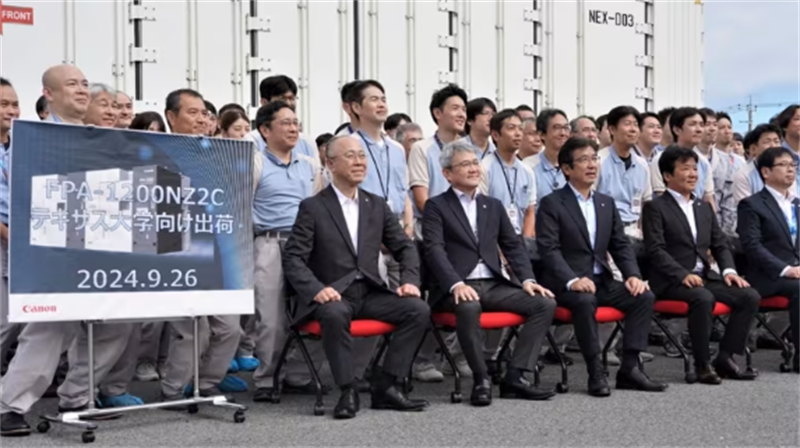Canon announced on Thursday (Sept.26) that it has delivered the first unit of its next-generation nanoimprint lithography equipment to the Texas Institute for Electronics, a consortium backed by the University of Texas at Austin and supported by Intel and other semiconductor companies. This advanced technology aims to reduce both production costs and electricity usage.
Unlike traditional photolithography, which uses intense light to project circuit patterns onto a wafer, Canon's nanoimprint technology stamps patterns directly into the resin using a mold. This simpler design consumes only about a tenth of the power compared to conventional photolithography machines and can create intricate three-dimensional circuits with a single stamp. It is also capable of handling the fine circuit patterns required for cutting-edge logic chips.
()

Canon has been developing this technology since 2014 and began selling the equipment in partnership with Kioxia and Dai Nippon Printing last October. Kazunori Iwamoto, Canon’s deputy chief executive for optical products, stated that the company aims to sell 10 to 20 units annually within the next three to five years.
However, challenges remain in scaling up nanoimprint lithography for broader use. These include addressing the need for advanced dust control to prevent defects and forming partnerships to develop compatible manufacturing materials. Despite these hurdles, Canon's technology represents a significant step forward in semiconductor manufacturing.
+86 191 9627 2716
+86 181 7379 0595
8:30 a.m. to 5:30 p.m., Monday to Friday
